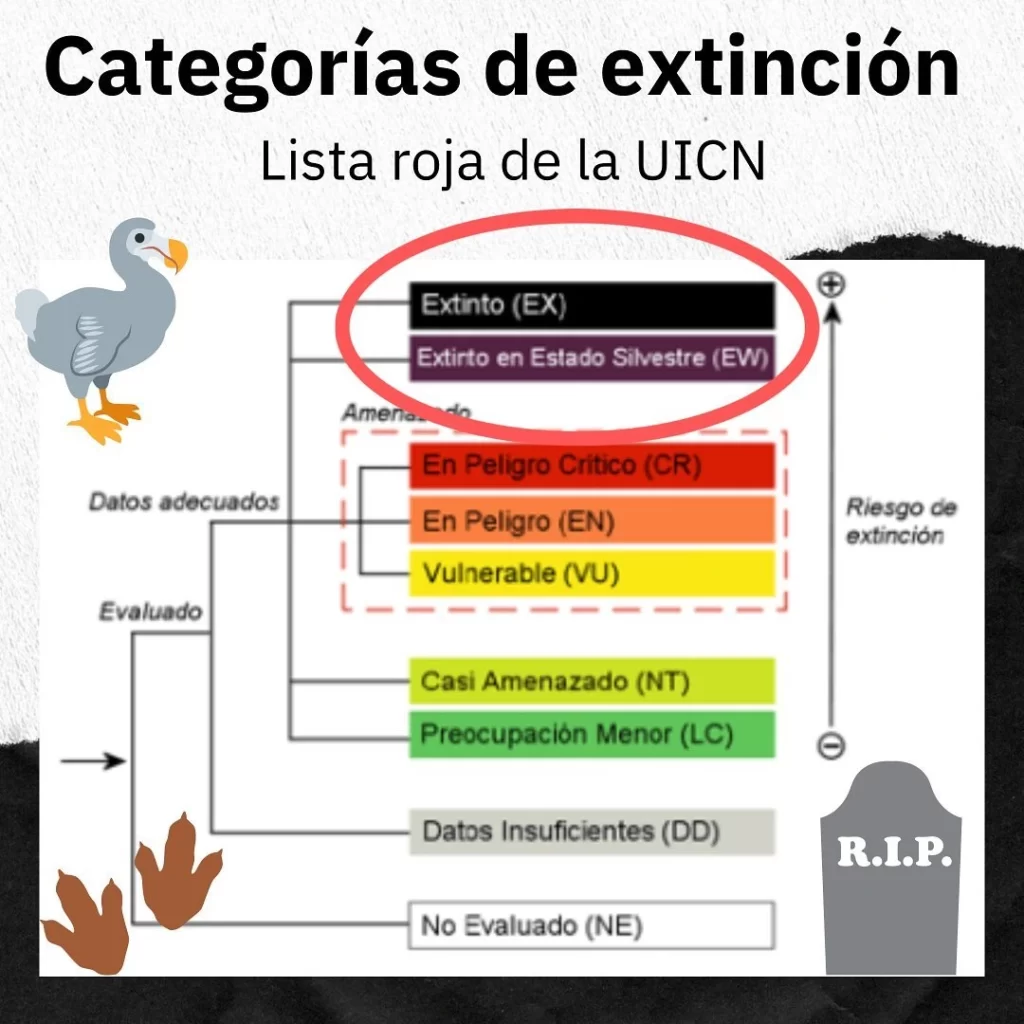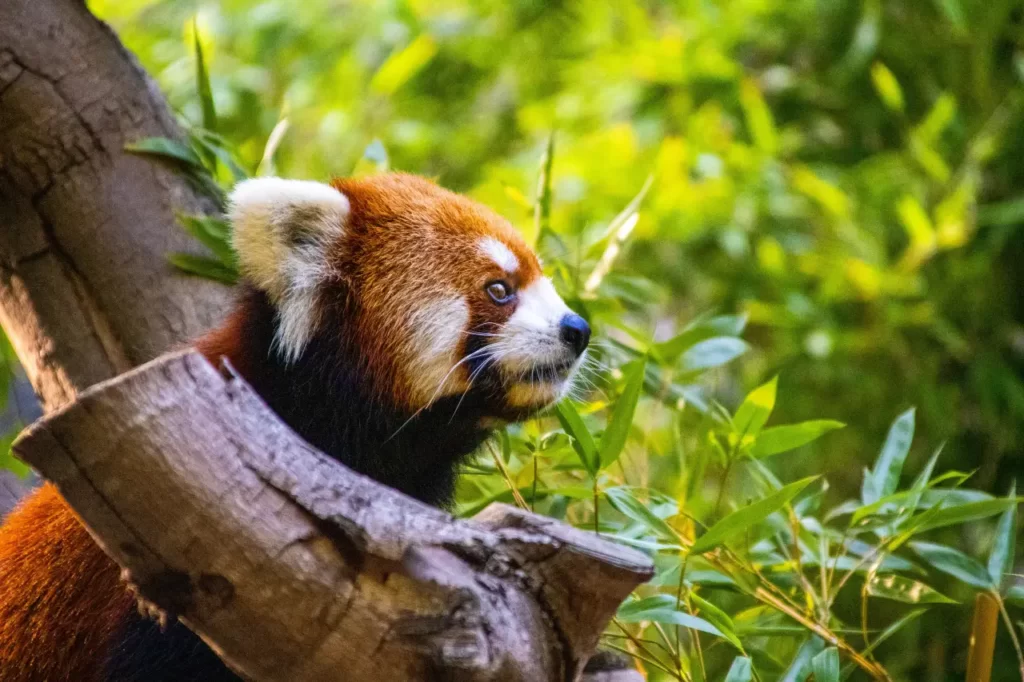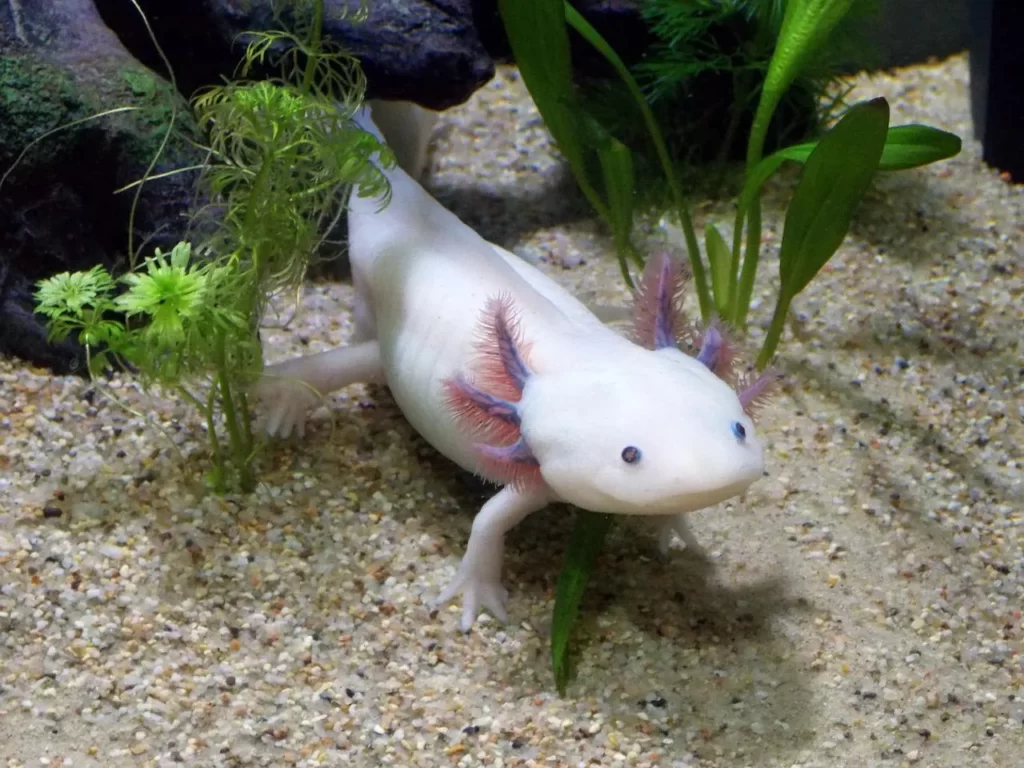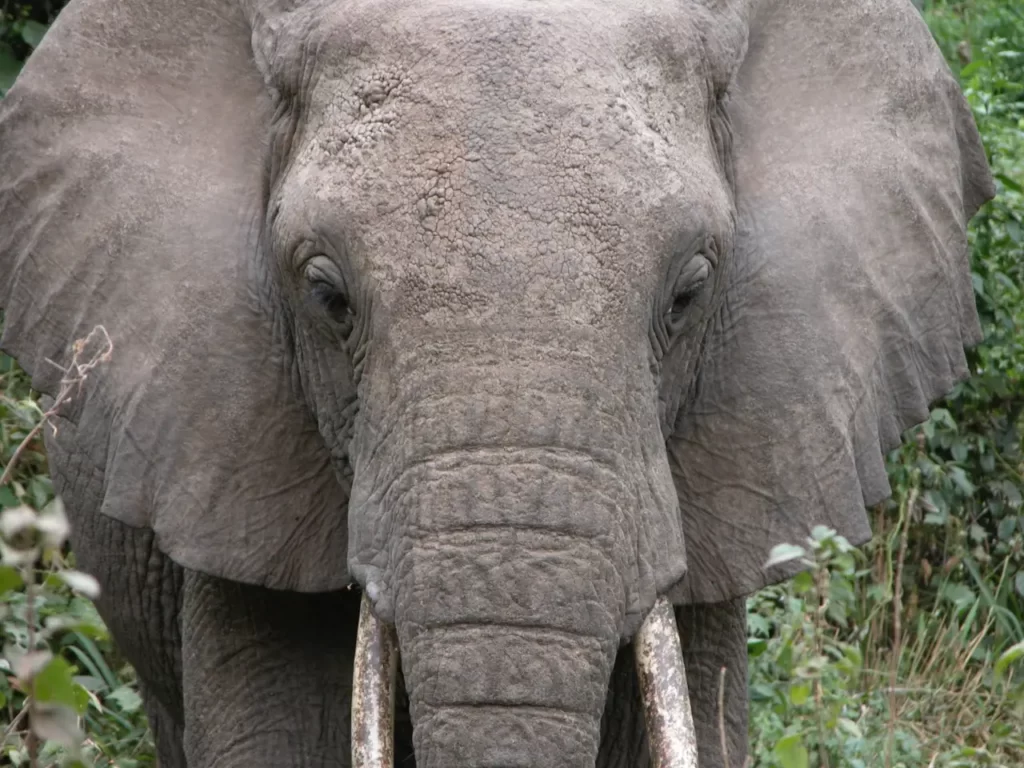Endangered Animals” is a phrase often heard, and it’s related to the risk that animal species face of disappearing from the face of our planet.
There are various causes leading to extinction, and although it’s commonly a natural phenomenon, human activities and climate change have been key factors in the disappearance of beautiful specimens like the Baiji dolphin, the dodo, the Pyrenean ibex…
The current trend indicates that, in a short time, species such as the Andean condor, the red panda, the tapir, the Siberian tiger… and many others are at risk of disappearing forever, in a phenomenon some scientists have named “the sixth mass extinction.”
When is a species considered endangered, what other causes exist, how many animals are currently endangered, what can be done to prevent the disappearance of these species from Earth?… Here you will find the answers to these questions.
Keep reading and discover everything about endangered animals and how to direct our actions in favor of nature!
What is Extinction?
The process of extinction is the total disappearance of the members of a certain species.
For biologists, it is considered a natural event within evolution as long as the rate varies around 5-10% of species per million years.
When a total disappearance of a high number of species (plants and animals) occurs in a short geological time (which can span thousands or millions of years), it is referred to as “mass extinction.”
There are occasions where the cause of extinction is a specific and unexpected event (like a meteorite impact); in that case, it is referred to as an “extinction-linked event,” which may or may not lead to a mass extinction.
Did you know that…? In terms of records, 'the dodo,' a flightless bird frequent on the Mauritius islands, was the first animal to go extinct due to human action. Click To Tweet
How Many Mass Extinctions Have Occurred on the Planet?
Throughout Earth’s history, there have been five major episodes of extinction, occurring over thousands or millions of years.
Among the causes are environmental factors (marine regressions, volcanoes…), altering the natural carbon absorption cycle in the atmosphere and oceans, or specific events like meteorite impacts.
Currently, there is talk of a sixth mass extinction, caused mainly by human beings and, compared to previous ones, advancing at an accelerated pace.
First Great Extinction
It originated 444 million years ago (Ordovician-Silurian) and occurred due to a drastic cooling of the Earth (glaciation) and a decrease in the amount of oxygen available for species’ survival.
It lasted 30 million years, and about 85% of the living species at that time (mostly marine organisms) disappeared.
Second Great Extinction
It took place 353 million years ago (Devonian-Carboniferous) and is related to the decrease in oxygen levels and volcanic activity, as well as the spread of algae.
During this time, about 82% of species disappeared over an approximate span of 20 million years.
Third Great Extinction
It happened 251 million years ago (Permian-Triassic), lasted a million years, and is considered one of the worst episodes suffered by Earth’s inhabitants, caused by volcanic activity, which led to global warming and oxygen loss.
96% of all marine species disappeared, as did three out of four terrestrial species.
Did you know that…? The volcanic eruption that led to the third great extinction expelled three million cubic kilometers of lava over present-day Siberia. Click To TweetFourth Great Extinction
It occurred 210 million years ago (Triassic-Jurassic) and originated from the enormous amount of greenhouse gases, leading to an increase in carbon dioxide (CO2) levels in the atmosphere.
80% of all terrestrial and marine species became extinct in an estimated time of one million years.
Fifth Great Extinction
It developed 65 million years ago (Cretaceous-Paleogene); its origin was the impact of a 12-kilometer diameter meteorite that fell on the Yucatan Peninsula (Mexico), causing a massive tsunami and fires.
The result was the disappearance of 76% of species, mainly affecting the dinosaurs.
What is the Sixth Mass Extinction?
This term refers to species that are currently endangered due to human action on the planet, which has driven global warming, habitat destruction, species overexploitation, and pollution.
According to the database of the International Union for Conservation of Nature (IUCN), and its most recent Red List of Endangered Animals (2021), more than 38,500 species are at risk of disappearing!
Unlike previous extinction episodes, the current event is occurring faster and, for many experts, has already started.
Did you know that…? A mathematical calculation developed by the Massachusetts Institute of Technology predicts that the sixth mass extinction could occur by the year 2100. Click To TweetWhen is a Species Considered Endangered?
A species is considered endangered when all members of the same are at risk of disappearing.
Did you know that…? 50 years ago, about 1.5 million elephants roamed all over Africa; the most recent census (2016) indicates the existence of only 415,000. Click To Tweet
Why Do Species Become Extinct?
There are multiple causes for a species to become extinct. In general, it can occur mainly due to four reasons: biological, natural events, unexpected events, and human action, with the latter being the most impactful today.
Biological Causes
It refers to organic processes and natural ecological factors by which a species dies; they are related to life span, diseases that affect them, predation, and competition between species.
These causes can increase the possibility of extinction in groups of animals with very limited distribution and populations.
Natural Events
These are related to natural disasters (drought periods, volcanoes, hurricanes, marine regression…).
Unexpected Events
Associated with specific and casual events, like a meteorite impact, which may or may not lead to a mass extinction.
Human Action
It is considered the main threat to biodiversity and refers to the various activities that humans carry out: agricultural and livestock development, use of natural and mineral resources, industries, urbanization, globalization, hunting and illegal trade, recreation…
The result is environmental pollution, the destruction of various habitats, the introduction of species, the overexploitation of natural resources, and the effects derived from climate change.
Did you know that…? During the coronation of Queen Elizabeth II in 1953, 700 black bears were killed in British Columbia, so their skins could adorn the typical hats of the palace guards of Buckingham Palace. Click To TweetWho Declares an Animal Endangered?
The organization responsible for declaring animal species endangered is the International Union for Conservation of Nature (IUCN), a non-governmental agency formed by institutions and states aligned with the United Nations (UN).
Through specialized studies, this organization compiles a scientific inventory of the conservation status of the biological diversity of animal or plant species in a territory, known as the “Red List of Threatened Species.”
Although not all species on the planet have been evaluated, the red list serves as a guide to determine the current situation of the species and the actions to follow to save them from extinction, and it is updated annually.
How is the risk of extinction of a species estimated?
To estimate the risk of extinction, a committee of the International Union for Conservation of Nature (IUCN) composed of more than eight thousand scientists in 160 countries, conducts constant studies of a specific animal population.
Based on the risk to its conservation, it is classified in a Red List of Threatened Species, which is updated every year.
Currently, there are nine threat categories on the IUCN Red List: Not Evaluated, Data Deficient, Least Concern, Near Threatened, Vulnerable, Endangered, Critically Endangered, Extinct in the Wild, and Extinct.
If the assessment is done at a regional level, there are two additional categories (for a total of eleven): Regionally Extinct (RE) and Not Applicable (NA).
Not Evaluated (NE)
Species in which their conservation category has not yet been evaluated.
Data Deficient (DD)
Species that lack sufficient data on their abundance and distribution for the assessment of their conservation category.
Least Concern (LC)
Species whose risk of extinction is relatively low.
Near Threatened (NT)
Species close to being in a state of threat if conservation measures cease.
Vulnerable (VU)
Species that face a high risk of extinction in the wild.
Endangered (EN)
Species that face a very high risk of extinction in the wild.
Critically Endangered (CR)
Species that face an extremely high risk of extinction in the wild.
Extinct in the Wild (EW)
Species whose last members are in captivity or outside their native habitat for preservation.
Extinct (EX)
Species whose last specimen has died.
Regionally Extinct (RE)
Species whose last individual capable of reproducing in a particular region has died or disappeared from it.
Not Applicable (NA)
Species that do not represent a stable wild population or are not within their natural distribution area in the considered region.

How many animals are endangered?
According to data from the International Union for Conservation of Nature (IUCN, 2021), of the 78,126 animal species evaluated and incorporated into the red list of threatened species, 5,278 are endangered, and 3,395 are critically endangered.
In terms of percentage, they include: 14% of all birds, 28% of crustaceans, 26% of all mammals, 33% of all corals, 34% of all reptiles, 41% of all amphibians, and 37% of sharks and rays.
Did you know…? Nearly half of all parrot species are 'endangered' and nearly 25% of species are 'critically endangered' Click To TweetHow many species go extinct per day?
According to data from the report of the Intergovernmental Science-Policy Platform on Biodiversity and Ecosystem Services (IPBES), about 150 species go extinct each day.
Did you know…? In the Faroe Islands (Denmark), hundreds of pilot whales are slaughtered each year in a traditional hunting party called 'grindabod' Click To Tweet
Some endangered animals in the world
Here are ten of the endangered animals in the world according to the Red List of the International Union for Conservation of Nature (IUCN, 2021).
The Red Panda
Considered the smallest panda in the world, it is a mammal famous for its striped tail and face with red and white spots, very similar to the red raccoon.
It has been classified as “Endangered” since 2015, as habitat loss and poaching have dramatically reduced its population to less than 10,000 reproductive-age individuals in the wild.
Did you know…? Humans have deforested more than 50% of the red panda's habitat. Click To Tweet
The Mountain Gorilla
It is a large ape with dark hair and a silver-colored back (adult male) that inhabits the jungles of Africa.
Poaching, the transmission of human diseases, and the destruction of its habitat reduced its population to 680 individuals, classifying it as a “Critically Endangered” species.
However, the International Union for Conservation of Nature (IUCN) indicated that, thanks to preservation efforts, by 2018 the population had increased to over a thousand individuals, placing it in the “Endangered” category.
Did you know…? In 2017, a group of anonymous attackers used automatic weapons to massacre twelve members of a well-known family of gorillas, protected by the forest rangers of Virunga National Park. Click To TweetThe Siberian Tiger
Also known as the “Amur tiger”, this fantastic creature lives between the border of Russia and China and is rated as the largest feline in the world, measuring 3.8 meters long (including the tail) and weighing 300 kilograms.
Currently, there are about 540 Siberian tigers in the world; the reduction of their habitat and illegal trafficking for use in traditional Chinese medicine classify it, according to the IUCN Red List, as “Endangered” since 2014.

The Tapir
It is a mammal related to horses, rhinoceroses, and zebras, with a broad body and a tubular-shaped nose, living in tropical rainforest areas.
Since 2014, three of the species (Central American, Malayan, and Andean tapirs) are classified as “Endangered” on the IUCN Red List, and one (Amazonian tapir) as “Vulnerable,” mainly due to hunting, illegal trafficking, and habitat degradation.
The North Atlantic Right Whale
This cetacean mammal (adapted to aquatic life) inhabits the North Atlantic Ocean, lives near the coast, and due to its slow swimming, has become an easy target for hunters.
Pollution and constant collisions with boat propellers also threaten this whale.
It was recently assessed (2020) and listed as “Critically Endangered” on the IUCN Red List, with about 400 individuals worldwide.
Did you know…? In the past, whales could detect and avoid nets made of fiber with their sonar; the new nylon nets are invisible in water and do not reflect sound. Every year, hundreds of whales drown in this 'deadly wall' Click To TweetThe Andean Condor
This bird lives in the Andes mountain range and is known for its large wings and a white feathered collar contrasting with its black plumage.
Uncontrolled hunting, ecosystem damage, and secondary poisoning from lead (by consuming animals shot by hunters) have reduced its population, listed as “Vulnerable” since 2020 on the IUCN Red List.

The South Andean Deer
Also known as the huemul, this robust-looking mammal with short legs and antlers lives in the Andean region of Chile and Argentina. It has been classified as “Endangered” on the IUCN Red List of Threatened Species since 2015.
Diseases transmitted by livestock, sport hunting, habitat loss, exotic species, and construction are the main reasons for the huemul’s endangered status.
The Ariel Toucan
This bird is characterized by its black plumage and beak, with striking colors around the eyes, chest, and throat.
It inhabits the humid forests of Brazil and Bolivia and has been on the IUCN Red List of Threatened Species as “Endangered” since 2016, mainly due to deforestation in the Amazon basin and hunting for trade.
Did you know…? The toucan named Grecia became famous for receiving a 3D prosthesis after a human attack in Costa Rica caused the loss of 80% of the upper part of its beak. Click To TweetThe Snow Leopard
This elusive large feline lives in the remote mountains of Central Asia (across 12 countries). Its light gray fur provides camouflage, and its paws are like snow boots.
Killing by farmers and habitat fragmentation are the main threats to its existence, classifying it as “Vulnerable” since 2016.
The African Forest Elephant
This terrestrial mammal primarily lives in the forests of Central and West Africa.
Poaching for ivory tusks is the main threat, and since 2020, it has been included in the IUCN Red List of Threatened Species and classified as “Critically Endangered.”
Did you know…? The illegal ivory trade has nearly led to the extinction of elephants, and despite penalties, the slaughter in Africa continues. Click To TweetEndangered Animals in Spain
Spain is home to over 50% of Europe’s animal species and more than 5% globally, making it one of the European countries with the highest marine biodiversity.
The main threats to these species are habitat loss, degradation, and fragmentation due to human activity and (for freshwater species) excessive water extraction.
The IUCN Red List for Spain indicates that most threatened species are birds (15%) and fish (7%).
Endangered animals in Spain include:
- Iberian Imperial Eagle.
- Cantabrian Capercaillie.
- Canary Houbara.
- Moorish Tortoise.
- Barbary Sheep.
- Iberian Lynx.
- El Hierro Giant Lizard.
- Pyrenean Brown Bear.
- Snub-nosed Viper.
- Mediterranean Monk Seal
Endangered Animals in Chile
Chile, a South American country with a great diversity of animals, has about 360 species endangered according to the IUCN Red List (2021), mainly mollusks, sharks, rays, and amphibians.
Overfishing is the main threat, and endangered animals in Chile include:
- Painted Spurdog.
- Butterfly Ray.
- School Shark.
- River Otter.
- Huemul.
- Chilean Frog.
- Volcano Mouthbrooder.
- Arica Hummingbird.
- Chilote Fox.
- Humboldt Penguin.
Endangered Animals in the United States
The United States, known for its biodiversity, currently has about 1,400 endangered species, particularly in Hawaii and the Pacific Islands, due to their isolation.
Climate change, overexploitation, pollution, diseases, and the introduction of invasive species are destroying habitats and threatening many species.
According to the IUCN Red List (2021), endangered animals in the United States include:
- Sea Otter.
- Florida Scrub-Jay.
- Flattened Musk Turtle.
- California Condor.
- Mojave Desert Tortoise.
- Yosemite Toad.
- Akohekohe.
- Black-footed Ferret.
- Yellow-blotched Map Turtle.
- Short-tailed Albatross.
Endangered Animals in Mexico
Mexico, as a mega-diverse country, hosts a wide variety of life forms, with many unique species.
The IUCN Red List (2021) reveals that around 314 species are endangered, particularly freshwater species.
Agricultural and urban pollution, habitat loss, overexploitation, and the introduction of invasive species threaten species like:
- Axolotl.
- Sierra Madre Sparrow.
- Yellow-headed Parrot.
- Vaquita.
- Central American Tapir.
- Antillean Manatee.
- Volcano Rabbit.
- Mexican Gray Wolf.
- Los Tuxtlas Shrew.
- Tequila Splitfin.

Endangered Animals in Peru
The Peruvian Amazon is home to about 1,700 bird varieties and many mammals, of which, according to the IUCN Red List (2021), 389 are at risk of extinction.
Agricultural expansion, illegal logging, illegal trade and hunting, excessive urbanization, and pollution affect Peruvian biodiversity, threatening species like:
- Andean Condor.
- Yellow-tailed Woolly Monkey.
- Andean Bear.
- Amazon River Dolphin.
- Peruvian Plantcutter.
- Bald Uakari.
- Lake Titicaca Giant Frog.
- Mountain Tapir.
- White-winged Guan.
Endangered Animals in Venezuela
Venezuela ranks among the top ten countries with the greatest biodiversity on the planet and is sixth in the Americas. Like the rest of the world, habitat destruction is the main cause of species extinction.
Deforestation, pollution, illegal hunting and trade, mining, and uncontrolled tourism constantly threaten the diversity of ecosystems.
The International Union for Conservation of Nature’s Red List (IUCN, 2021) indicates that in Venezuela, around 289 species are threatened with extinction, including:
- Orinoco Crocodile.
- Páramo Elf.
- The Cardinalito.
- Spider Monkey.
- Harpy Eagle.
- Ocelot.
- Yapacana Red Frog.
- Staghorn Coral.
- Sawfish.
Animals on the Brink of Extinction
Among the species currently considered on the brink of extinction, meaning they face a high or extremely high risk of extinction in the wild, are:
- Red Panda.
- Komodo Dragon.
- European Rabbit.
- Asiatic Lion.
- Tana River Red Colobus.
- Manumea Pigeon.
- Tapir.
- Kakapo.
- Gharial.
- Mountain Gorilla.
- Giant Pseudoscorpion.
- Nacra.
- African Forest Elephant.
- Javan Rhinoceros.
Animals Endangered by Climate Change
The Earth has always undergone climate changes; however, currently, it is happening at such a rapid pace that it cannot be explained by natural causes alone.
Human action is the main driver of climate change, with the emission of greenhouse gases (carbon dioxide, methane, and nitrogen oxides) undoubtedly altering the habitat of living beings.
Experts believe that the average global temperature has accelerated in recent years, and the trend suggests that between 2020 and 2024, it will continue to rise, affecting environmental patterns and thus the natural distribution of animals.
Ocean acidification and warming, polar melting, drought, floods, rising sea levels, loss of freshwater areas, disease outbreaks… are indicators that the climate is changing, threatening biodiversity.
These habitat changes create limitations for adaptation, reproduction, coexistence, and movement of the various existing animal species, making them vulnerable, some more than others.
Some of the animals most affected by climate change include:
- Corals, particularly the “Staghorn Coral”
- Common Hippopotamus.
- Norwegian Cod.
- Long-billed Cockatoo.
- Polar Bear.
- Horned Guan.
- Axolotl.
- Oxapampa Poison Frog.
- Caribou.
- Blue Whale.
Animals that Have Been Saved from Extinction
Every year, the list of endangered species is updated by various organizations (such as the International Union for Conservation of Nature, IUCN).
Thanks to the efforts and conservation plans of activists and public and private institutions, several animal species have overcome the threat level (categories: vulnerable, endangered, and critically endangered), and have moved to the “least concern” category.
Among these animals that have been saved from extinction are: the bald eagle (since 2007), the humpback whale (since 2015), the southern right whale (since 2017), and the scarlet macaw (since 2016).
Despite this, they continue to be monitored by scientists to prevent them from being at risk again if conservation measures decrease.

Are there animals considered extinct that have been rediscovered?
Yes; this occurs when a species that has been classified as “extinct” by the scientific community reappears many years later!
It is known as the “Lazarus effect,” in reference to the Bible passage in which Jesus Christ resurrected Lazarus of Bethany from the dead.
Among these animals that returned from the dead are:
- The “jambato or harlequin of Mindo,” a frog that had not been seen alive in 30 years and was rediscovered in 2019.
- The “Gould mouse,” which was considered extinct since 1895 and reappeared 125 years later.
- Fernanda, “a fantastic Galapagos turtle” extinct for more than a hundred years and seen again in 2019.
- “The coelacanth,” a prehistoric fish believed to have been extinct for 65 million years but was rediscovered in 1938.
How to Prevent Species Extinction?
Preventing the disappearance of the variety of living beings that inhabit the planet implies that each one of us practices specific activities that support the efforts carried out daily by many organizations.
Among the strategies that can be implemented are:
- Contributing to the reduction of tree felling and burning through recycling practices.
- Creating or collaborating with natural reserves.
- Avoiding the pollution of natural resources.
- Not participating in illegal hunting or trafficking of species.
- Planting trees to restore ecosystems.
- Making responsible purchases, avoiding at all times the use of furs or any product that harms animal life.
- Supporting conservation initiatives or biodiversity protection.
- Reporting illegal activities that endanger animal life.
- Reducing water consumption, using this vital liquid responsibly.
References
Cloquell, J. M. E. (2017). On the Sixth Extinction (I): Appearance and Reality in the Ecology of the Sixth Extinction. Latin American Journal of Critical Animal Studies, 4(1). https://bit.ly/3Qs9l1Q
France 24. (2021). More than 38,500 species are endangered, according to the IUCN Red List. https://bit.ly/3MYaSKm
IPBES. (2019). Summary for policymakers of the global assessment report on biodiversity and ecosystem services of the Intergovernmental Science-Policy Platform on Biodiversity and Ecosystem Services. https://bit.ly/3tDW6BB
National Geographic Spain. (2022). A mathematical calculation predicts the sixth mass extinction on Earth. Topics: Climate change. https://bit.ly/2wQ0jnR
IUCN. 2021. The IUCN Red List of Threatened Species. Version 2021-3. https://bit.ly/3OhKiwF


